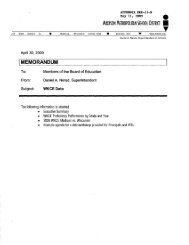interpretations of standards-based grading and reporting - School ...
interpretations of standards-based grading and reporting - School ...
interpretations of standards-based grading and reporting - School ...
You also want an ePaper? Increase the reach of your titles
YUMPU automatically turns print PDFs into web optimized ePapers that Google loves.
Sara Hagen<br />
Chapter 2: A New Vocabulary <strong>of</strong> St<strong>and</strong>ards-Based<br />
Grading<br />
Implementing <strong>st<strong>and</strong>ards</strong>-<strong>based</strong> <strong>grading</strong> requires developing <strong>and</strong> sharing a<br />
language <strong>of</strong> <strong>st<strong>and</strong>ards</strong> <strong>and</strong> criteria. Language specific to the MMSD implementation <strong>of</strong><br />
<strong>st<strong>and</strong>ards</strong>-<strong>based</strong> <strong>grading</strong> includes "underst<strong>and</strong>ing," "power <strong>st<strong>and</strong>ards</strong>," the labels "I,"<br />
"2," "3," <strong>and</strong> "4," <strong>and</strong> "trend scores." Knowing how teachers are defining <strong>and</strong> using<br />
these terms is a key step in facilitating or redirecting conversations about them. Teachers<br />
very much want to have a shared underst<strong>and</strong>ing <strong>of</strong> these terms.<br />
(<br />
Underst<strong>and</strong>ing [page 47]<br />
The MMSD has chosen to use "underst<strong>and</strong>ing" as the key descriptor for the labels<br />
I, 2, 3, <strong>and</strong> 4 in their <strong>st<strong>and</strong>ards</strong>-<strong>based</strong> <strong>grading</strong>. Teachers described underst<strong>and</strong>ing in ways<br />
that fell into three categories: statements about the basic nature <strong>of</strong> underst<strong>and</strong>ing,<br />
statements describing the process <strong>of</strong> underst<strong>and</strong>ing, <strong>and</strong> statements about how<br />
underst<strong>and</strong>ing is visible in students' work. Of these, the third category has the most<br />
potential for developing a shared, practical underst<strong>and</strong>ing <strong>of</strong> underst<strong>and</strong>ing.<br />
Embodied metaphors [page 48]<br />
In this section I use cognitive scientists Lak<strong>of</strong>f <strong>and</strong> Johnson's (1999) work to<br />
identify teachers' metaphors for underst<strong>and</strong>ing that are <strong>based</strong> on human beings'<br />
experience as embodied persons. These include underst<strong>and</strong>ing as ...<br />
• Getting <strong>and</strong> processing information<br />
• Seeing<br />
• Movement through physical space<br />
• Hitting a target or reaching a goal<br />
• Mastery or being in control<br />
• The result <strong>of</strong> strength<br />
These metaphors provide very general, summative statements about a student's<br />
underst<strong>and</strong>ing that cannot be used reliably <strong>and</strong> consistently to inform a conversation on<br />
learning or to provide a basis for formative feedback.<br />
(<br />
Process metaphors [page 50]<br />
Teachers' metaphors about the process <strong>of</strong> underst<strong>and</strong>ing may provide the basis for<br />
useful conversations about teaching <strong>and</strong> learning. These include underst<strong>and</strong>ing as ...<br />
• Sudden - a "Eureka" moment<br />
• A slow process<br />
• Cumulative<br />
• Something forced upon the learner<br />
• Completeness<br />
• Having different levels<br />
These metaphors provoke questions about how learning occurs <strong>and</strong> what teachers can do<br />
to best facilitate learning.<br />
(<br />
Page 6


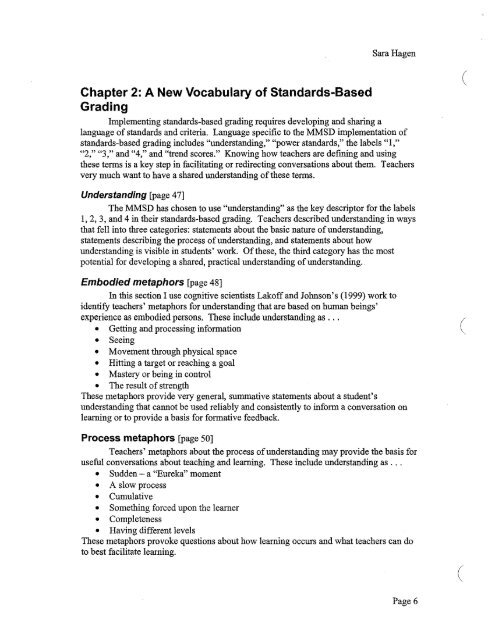
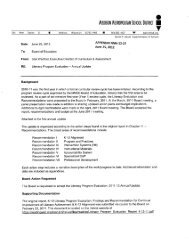
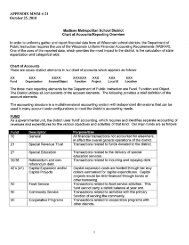
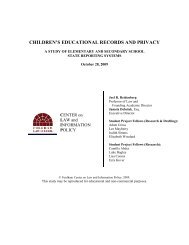

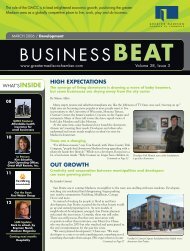
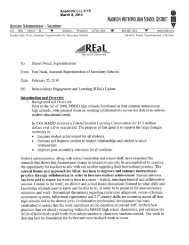
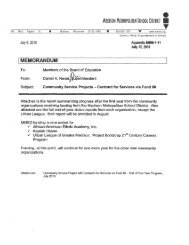
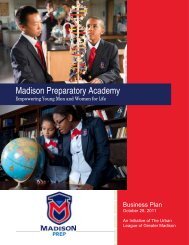
![by Shaina Wright [PDF] Ralph Waldo Emerson Prize 2006 - School ...](https://img.yumpu.com/26083584/1/174x260/by-shaina-wright-pdf-ralph-waldo-emerson-prize-2006-school-.jpg?quality=85)
